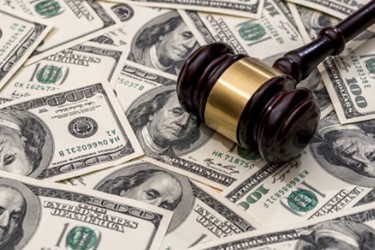1,4-Dioxane Contamination Lawsuits Are Piling Up In Long Island


The presence of 1,4-dioxane — a carcinogen stemming from industrial solvents, shampoos, and other manmade products — in New York’s drinking water has been a known problem for years. And, without a clear solution in sight, lawsuits over the contamination have begun to pile up.
More than two dozen communities in Long Island have joined together in a lawsuit targeting the companies responsible for producing 1,4-dioxane. The communities claim that these companies are at fault for creating products that would eventually leach the compound into water supplies and for dumping them directly into the ground over Long Island’s drinking water supply.
“The Town of Hampstead is joining more than 25 water suppliers across Long Island suing big manufacturers for ‘knowingly and willfully’ selling products containing ‘this harmful compound’ they knew or should have known ‘would inevitably reach groundwater,’” CBS New York reported.
These communities face a steep financial burden due to the contamination. One estimate from February 2019 found that Long Island is looking at a $840 million price tag to add treatment systems to its 185 drinking water wells contaminated by 1,4-dioxane.
“Getting it out will cost dearly for pricey new UV light filtration technology: $40 million alone is needed by the Town of Hempstead to clean the water for its 120,000 customers,” per CBS. “That’s a costly fix, prompting [the] flood of lawsuits.”
Even though the problem has been apparent for some time, the cost and technical difficulty of equipping treatment systems has meant that Long Island has only just begun fighting back. The Bethpage Water District, for instance, spent more than a year and a half and $4 million to become just the second local treatment system capable of removing the contaminant.
“The cost and time it has taken to get it in service ... shows the challenge Long Island water districts face to remove 1,4-dioxane, which has been tied primarily to industrial sites where it was used as a solvent stabilizer, but is also found in some household products,” Newsday reported. “Water districts across Long Island have warned of severe conservation measures and rate hikes when the state starts enforcing a standard for 1,4-dioxane, one of three new contaminants New York State is looking to regulate in drinking water.”
On the other side of the mounting lawsuits, Dow Chemical, a 1,4-dioxane manufacturer in the area, has issued a statement refuting its role in the contamination and the links between the compound and adverse health effects.
“These lawsuits are without merit,” Dow said in a statement, per CBS. “There are no human studies showing that dioxane causes harm at the low levels at issue in these lawsuits. It is important to note that the water suppliers have consistently stated the drinking water is safe.”
Though the dozens of lawsuits are in their early stages, it’s clear that drinking water treatment operations throughout Long Island will be seeking help as they look to remove 1,4-dioxane.
To read more about how drinking treatment operations remove contaminants, visit Water Online’s Drinking Water Contaminant Removal Solutions Center.
